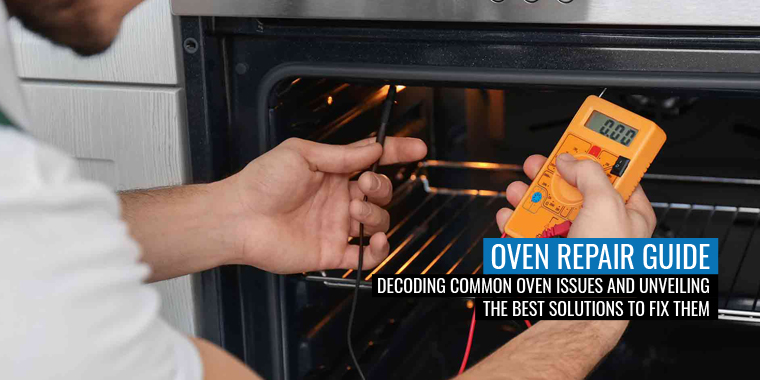
An oven is a precious addition to your kitchen. It makes cooking easy, effortless, and enjoyable. Further, you can experiment with baking, toasting, and grilling and enjoy delicious food you have never tasted. However, you cannot expect your oven to last forever. Over time, constant working leads to wear and tear and malfunctioning. This oven repair guide discusses the most common oven issues and their solutions.
Oven Repair Guide for Common Oven Issues
Inefficient Cooking
Many people complain that the food doesn’t taste as good as it used to be. It suggests that the cooking prowess of the oven has come down drastically. What could be the reason? Most probably, the heating element is causing the difficulties.
How to solve this issue? Turn off the power before loosening the screws of the heating element to check thoroughly. If it seems faulty, replace it with a new one. If you have doubts, contact an appliance repair specialist to perform this task.
Unusual Temperature Variations
Under normal circumstances, the oven produces consistent heat to promote even cooking. A faulty thermostat or sensor can make the temperature inconsistent. It is a common issue that people encounter gradually over time.
Any oven repair guide would recommend recalibration. Thermometers can help you with that. Follow the guidelines of the manufacturer to ensure proper temperature calibration. If it does not address the issue, examine the sensor. Make sure that it is not in contact with the heating element. Moreover, you can use an ohmmeter to assess the condition of the sensor. Replace the damaged sensor if needed.
Jammed Door
A jammed door can disrupt your cooking schedule. If the door does not close tightly, you cannot expect 100% efficiency.
Switch off the oven for a few minutes when you experience the jammed door issue. Disconnect the plug from the power source. Once it cools down, switch on the oven again to check if the problem is solved. If it does not, take out the door from the hinges. Examine the springs and hinges closely. If you notice any damaged component, replace it to solve the issue.
Failing to Power Up
Sometimes, your oven may refuse to turn on. It can be frustrating, especially in the morning. An electrical problem could be the possible reason. A defective ignitor can also cause this problem.
Do you have a gas oven? Then, check whether the range ignites or not. If the range fails to ignite correctly, opting for a replacement is the optimal solution. If there’s no response from either source, it’s advisable to seek professional assistance as the issue may lie within the gas line.
Are you using an electric oven?
Look at the unit to see whether it is drawing power. If you see an inactive display, the circuit must be reset at the breaker. Sometimes, the light may turn on without heating the oven. It suggests internal wiring or heating element issues.
These are the most common issues and solutions you can come across in an oven repair guide. Contact an experienced oven repair expert to solve more complex issues.

